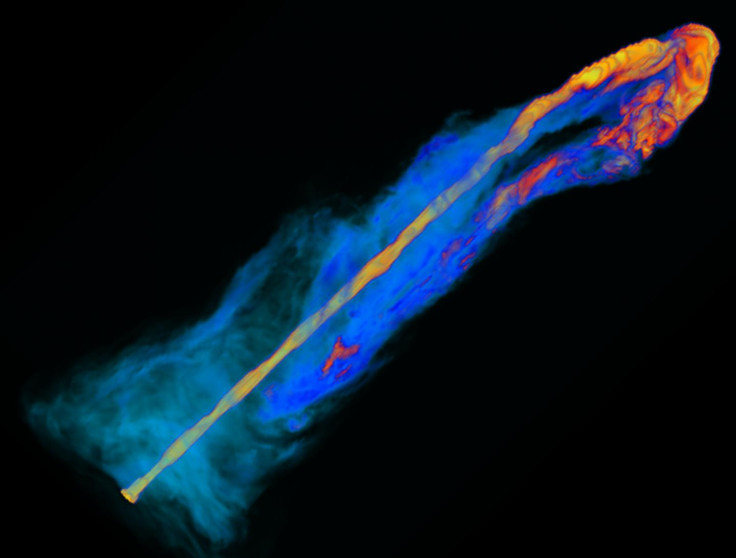One of the most energetic phenomena in the universe is heading towards Earth
Blazars produce vast, hyper-fast jets of intense radiation.

Quasars are one of the most extreme and energetic phenomena in the known universe. Essentially, they are the active cores of distant galaxies which blast out vast, hyper-fast jets of intense radiation and material that stretch for hundreds of thousands of light-years.
When these jets happen to be oriented directly towards Earth – or indeed any other observer – the quasars appear brighter and are defined as "blazars". In fact, blazars can appear so bright that they outshine all the other stars in their host galaxies.
Last year, astronomers noticed that the blazar known as CTA 102, 7,600 million light years from Earth, brightened considerably and briefly became the most luminous blazar ever observed for a few days in December.
In an attempt to learn more about this unusual event, researchers at the Astrophysical Observatory of Turin coordinated an international observation campaign involving more than 40 telescopes in the northern hemisphere. These made thousands of observations in the visible light spectrum, as well as in radio and infrared frequencies.
The scientists found that the jet had a "serpentine" shape. The incredible rise in the luminosity of the blazar was due to the "increased alignment of the emitting zone of the jet with our line of sight to the object", said José Antonio Acosta Pulido, a researcher at the Instituto de Astrofísica de Canarias and an author of the study describing the observations, published in the journal Nature.
In other words CTA 102 appeared most bright when it was pointing and firing material directly towards us.
Because CTA 102 is so distant, the increased alignment of its jets with the Earth would actually have taken place 7,600 million years ago – the time it takes for the light being emitted to reach us.
So how are quasars (and blazars) produced?
Scientists think that all large galaxies contain supermassive black holes at their centre. At times, these black holes actively 'feed' on incoming material. But with so much material being sucked in at one time, the black hole can become clogged and a huge, swirling disk may form around the centre of the galaxy.
This disk becomes superheated to millions of degrees Celsius due to the extreme gravitational pressure, emitting huge amounts of radiation in the process. Meanwhile, the rapidly spinning black hole's magnetic field whips the material up into vast jets which are ejected in two opposite directions at nearly the speed of light.
Thankfully, no blazars have been detected anywhere near Earth.




















